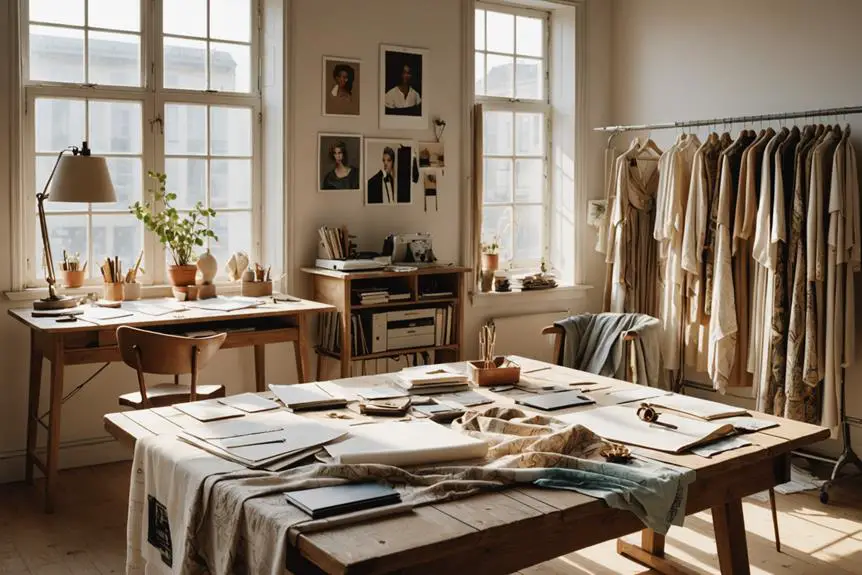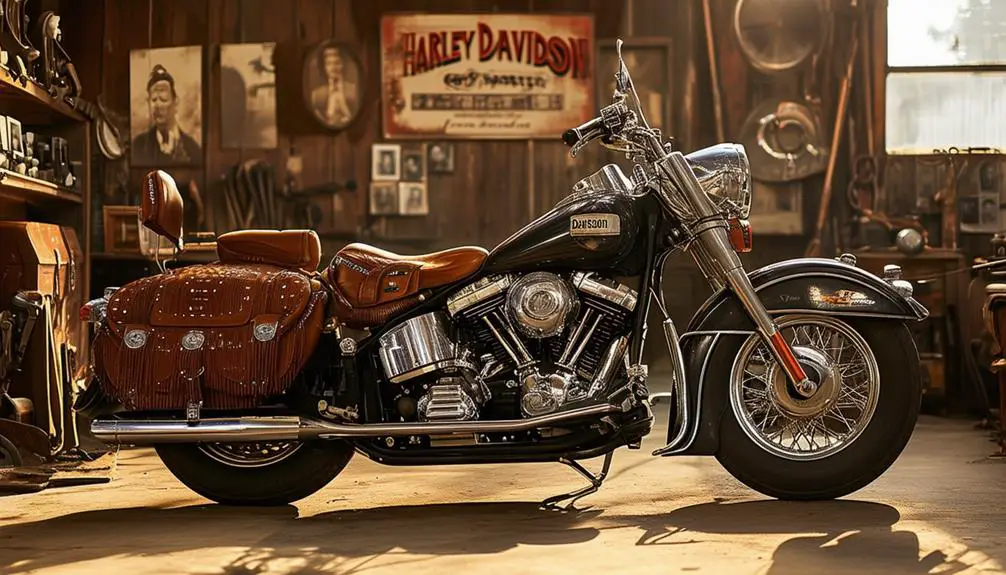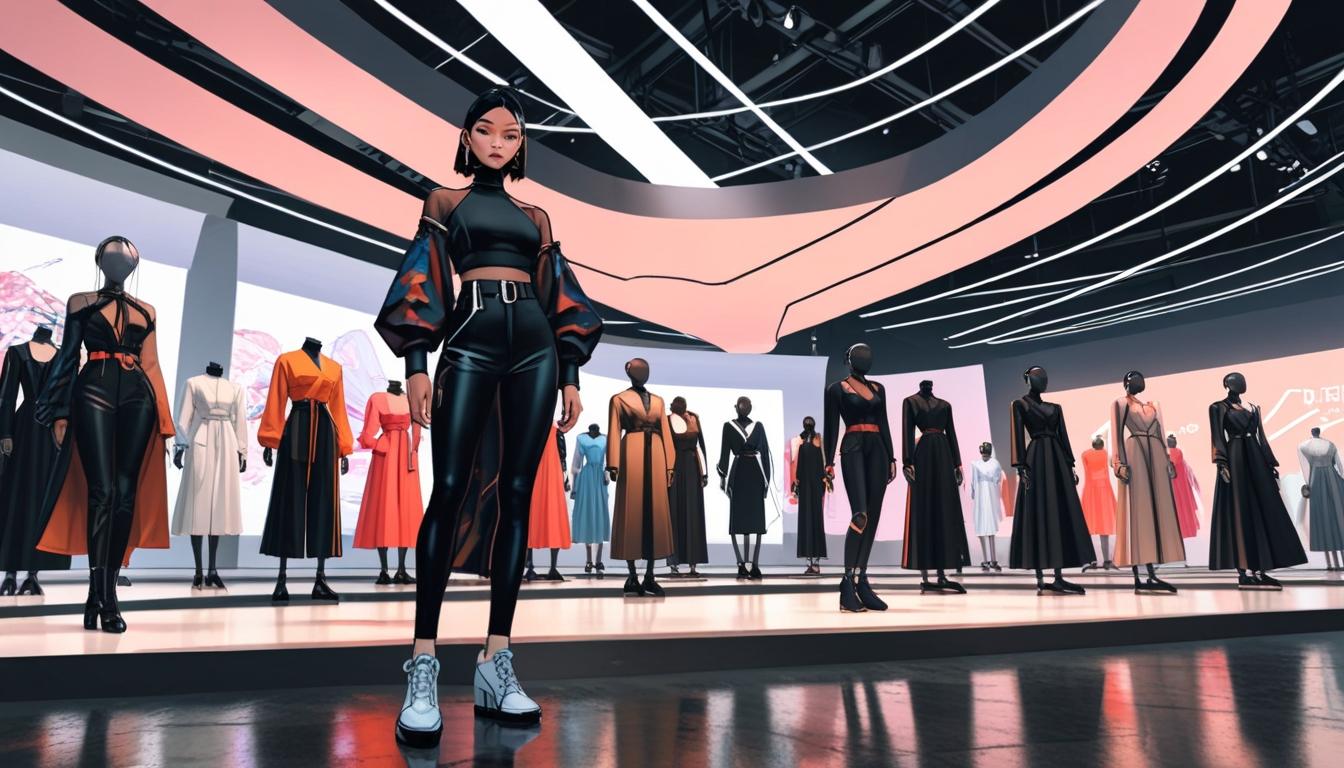The House of Dior has dazzled the fashion world with remarkable designs throughout its history. You can't overlook the 1947 New Look, which introduced cinched waists and flowing skirts, revolutionizing women's fashion. Princess Margaret's 1949 Birthday Dress showcased Dior's exquisite craftsmanship. Fast forward to 2016, when Maria Grazia Chiuri became the brand's first female creative director, incorporating feminist slogans and themes into her collections. This blend of tradition and modernity has sparked conversations about women's rights in fashion. Each design tells a story, and there's so much more to discover about Dior's ongoing influence and legacy.
Iconic Dior Looks Through the Decades
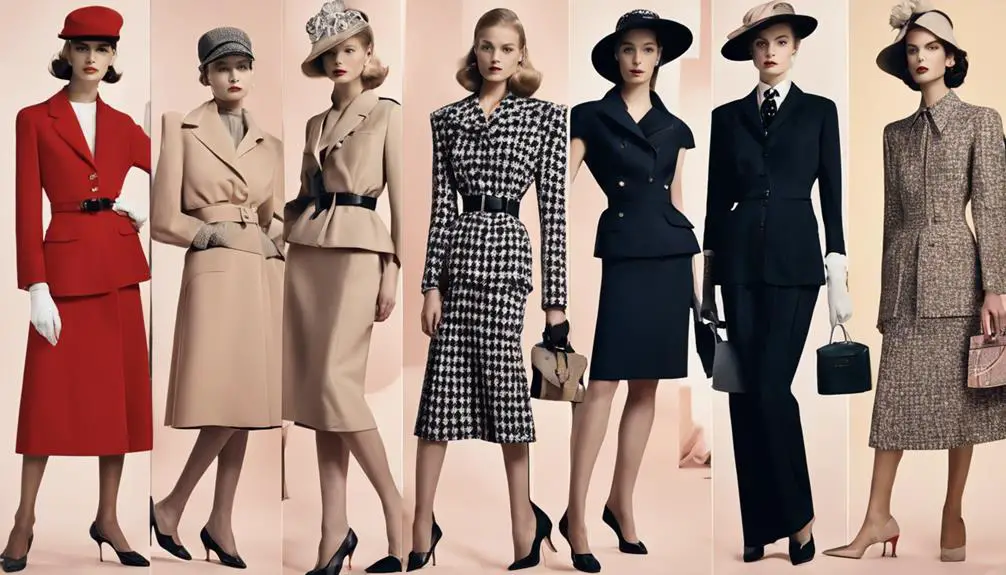
Dior's designs have shaped the fashion landscape for decades, showcasing a remarkable evolution in style. One of the most iconic moments came in 1947 with the debut of the New Look. This revolutionary style featured cinched waists and full skirts, epitomized by the stunning Bar suit. It didn't just change fashion; it transformed how women viewed their bodies and attire.
In 1949, Dior designed the exquisite Birthday Dress for Princess Margaret, made with layers of silk organza over satin, adorned with intricate bead detailing. This piece highlighted the craftsmanship that defined Dior's couture house.
As time moved on, the Spring 1953 "Tulip" collection shifted the focus towards streamlined silhouettes and flowing dresses, a lighter take that dominated until 1955.
Later, in 1967, Marc Bohan introduced the Dior oblique motif, a signature that would grace many iconic handbags worldwide.
Fast forward to the late '90s, and you find John Galliano at the helm, known for his extravagant gowns and theatrical flair. His collections included standout pieces like the newspaper print slip dress and the beloved Saddle bag, which captured the imagination of fashion lovers everywhere.
Through each decade, Dior has offered unique styles that reflect the times while pushing the boundaries of fashion. Whether it's the classic elegance of the New Look or the bold, artistic expressions under Galliano, every piece tells a story of innovation and timeless beauty.
Maria Grazia Chiuri's Influence
With the foundation of iconic designs firmly established, Maria Grazia Chiuri's arrival in July 2016 marked a transformative era for Dior. As the first female creative director, she brought a fresh perspective that resonated deeply with modern audiences. Her debut collection featured the now-famous slogan tee, "We should all be feminists." Inspired by Chimamanda Ngozi Adichie's TED Talk, this piece signaled a significant shift towards feminist themes in fashion, making a bold statement about empowerment and inclusivity.
Chiuri's innovative approach also reflects a broader evolution within the brand, as seen in the historical overview of Christian Dior tags, which illustrates how design has changed over the decades.
Chiuri's vision reimagined classic Dior silhouettes, blending the brand's storied craftsmanship with contemporary messages. Each collection became a narrative, weaving together traditional techniques and modern ideals. She challenged the fashion industry to embrace gender equality, opening the door for broader conversations about women's rights.
Her work not only elevated Dior but also influenced other designers to adopt activist approaches, proving that fashion could be a platform for change.
Under Chiuri's leadership, Dior became synonymous with inclusivity. You could see her commitment to empowering women reflected in every garment, emphasizing that fashion is for everyone.
Evolution of Slogan Tees
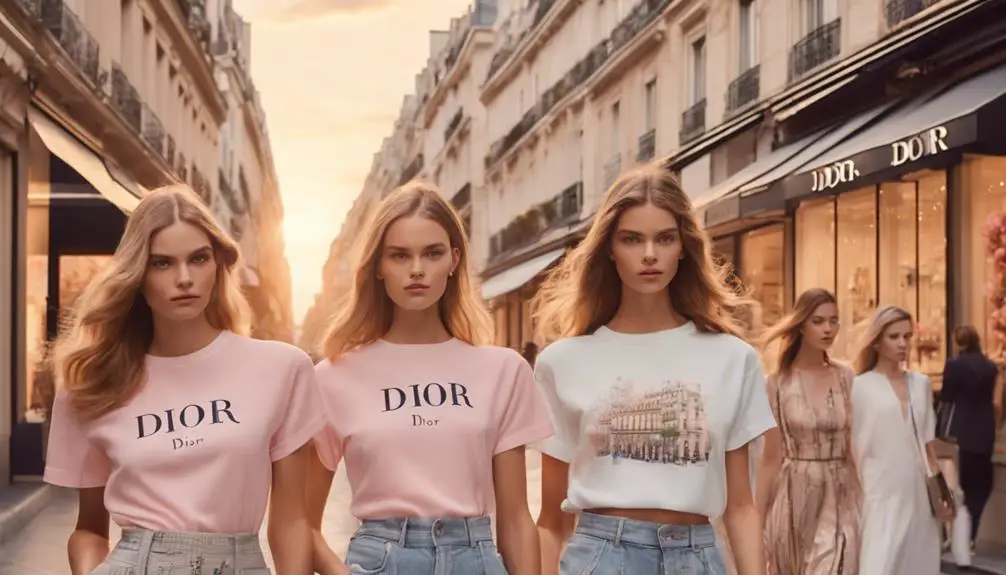
The evolution of slogan tees has become a significant aspect of modern fashion, transforming how individuals express their beliefs and values through clothing. With roots in self-expression, slogan tees have emerged as powerful tools for fashion activism, allowing you to showcase your opinions and raise awareness about social issues.
The history of fashion brands, like Burberry, demonstrates how clothing can reflect cultural movements and societal changes, further enhancing the impact of slogan tees in today's fashion landscape vintage fashion insights.
Maria Grazia Chiuri made waves in 2016 when she introduced the slogan "We should all be feminists" in her debut Dior collection. This moment marked a turning point in the fashion industry, as it highlighted feminist themes and underscored the importance of women's rights.
Chiuri's designs weren't just stylish; they became a canvas for empowerment, encouraging you to engage with pressing social issues. Since then, other fashion brands have followed suit, embracing the trend of slogan tees to promote inclusivity and activism.
These garments empower you to wear your heart on your sleeve—quite literally! Whether it's advocating for women's rights or addressing broader social issues, slogan tees serve as your voice in a world that often tries to silence it.
The rise of slogan tees signifies a shift in the fashion landscape, moving beyond mere aesthetics to a space where personal beliefs and values can shine. As you slip on a tee that resonates with you, remember that you're part of a larger movement, one that champions self-expression and ignites conversations about empowerment and change.
In this way, slogan tees have become an essential part of contemporary fashion, reflecting our evolving society and the power of words.
Reception of Chiuri's Collections
Maria Grazia Chiuri's collections have garnered enthusiastic reception, enchanting both critics and consumers alike. Her innovative approach blends traditional craftsmanship with contemporary themes, captivating the fashion industry. Chiuri made headlines with her debut collection, which introduced the now-iconic "We should all be feminists" slogan tee. This bold statement sparked essential discussions about gender equality, challenging the norms of high fashion.
Critics have lauded Chiuri's commitment to inclusivity, showcasing diverse models on the runway. This representation reflects a significant shift in how the industry views empowerment and beauty. By prioritizing diversity, Chiuri not only elevates the visibility of underrepresented voices but also encourages acceptance and appreciation of varying identities.
Her designs have consistently received features in major fashion publications, amplifying their influence beyond traditional fashion circles. This widespread recognition demonstrates how Chiuri's creative vision resonates with a broader audience, engaging individuals who may not typically follow fashion closely.
Furthermore, the success of Chiuri's collections has inspired other luxury brands to adopt similar socially conscious messaging. This trend sets a new standard in the fashion industry, pushing for a more responsible and aware approach to branding and design.
Long-Term Effects on Fashion Industry
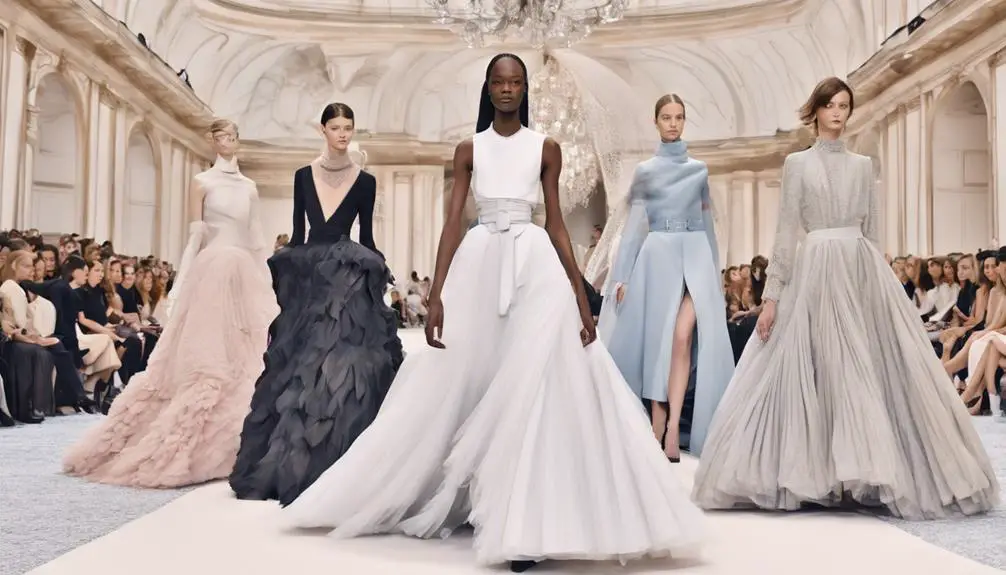
Transforming the fashion landscape, Chiuri's groundbreaking tenure at Dior has sparked a wave of change that extends far beyond the runway. As the first female creative director of the Dior fashion house, Maria Grazia Chiuri has set a powerful precedent for female leadership in luxury fashion. Her introduction of feminist-themed slogan tees, like "We should all be feminists," has shifted the conversation towards socially conscious messaging in the industry.
This evolution mirrors the same shift seen in the rise of vintage fashion, where brands like Ralph Lauren maintain their relevance through cultural and social influences.
Chiuri's focus on fashion activism has inspired other brands to address social and political issues, creating a trend where fashion narratives intertwine with activism. You might notice more and more designers collaborating with activist organizations, reflecting a growing demand for clothing that expresses personal beliefs.
This movement underscores a collective yearning for empowerment and gender equality, essential themes in today's society.
The legacy Chiuri is building isn't just about beautiful garments; it's about fostering discussions on women's rights and equality. Major fashion platforms and publications are now buzzing with these critical conversations, thanks to her influence.
By making these issues part of the luxury fashion dialogue, Chiuri has encouraged a generation of designers to think deeply about their roles in shaping culture.
In essence, her work is more than just fashion; it's a call to action. You're witnessing a transformation where the fashion industry recognizes its power to influence societal change, paving the way for future designers to follow in Chiuri's footsteps.

